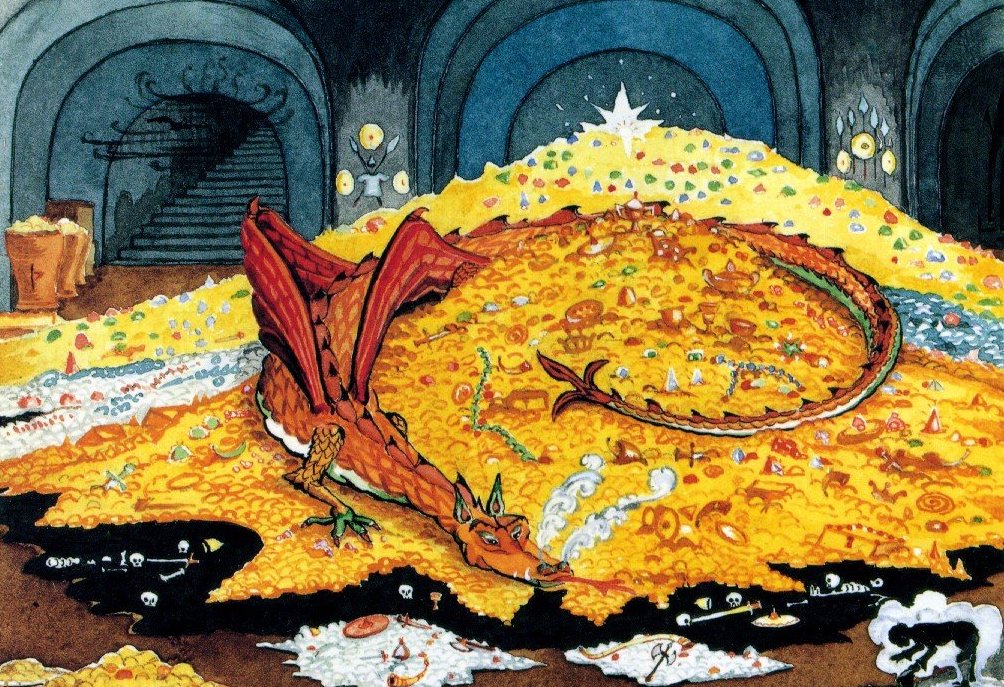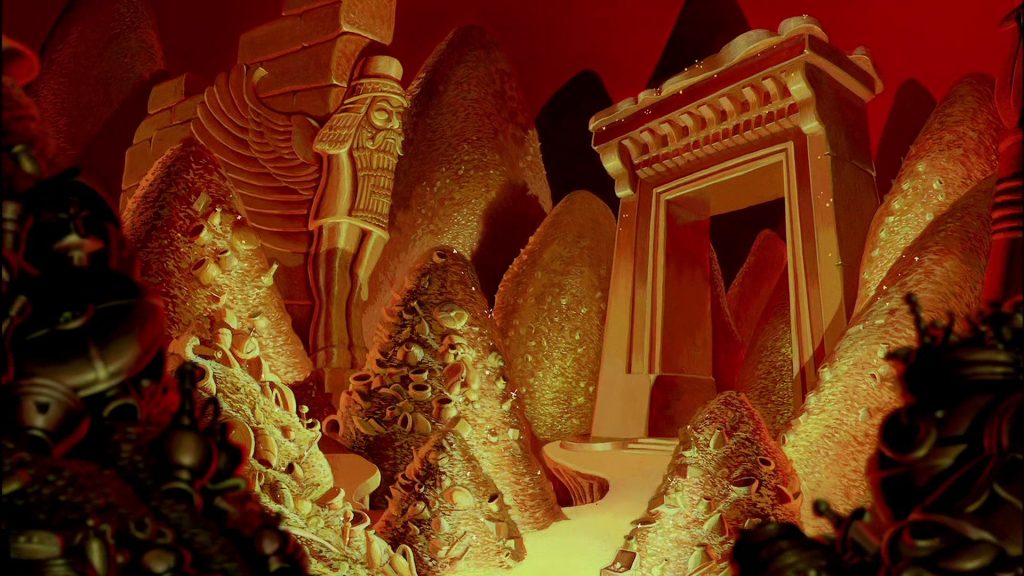I’m currently reading the Husain Haddawy translation of The Arabian Nights, and I came across this quote:
He spent ten days in preparation, packing what he needed, together with the gifts together with the gifts the princes and merchants of the city had given him for his journey. Then he set out with the king with his heart on fire to be leaving his city for a whole year. He left, with fifty Mamluks and many guides and servants, bearing one hundred loads of gifts, rarities, and treasures, as well as money.
There’s something fun about this description of wealth. It really tickles my imagination with the variety of treasure it describes. It’s about the furthest thing from the abstracted, frictionless, digital conception of money we have today. Luckily, it seems older tradition of treasure is being kept alive in children’s media, and fantasy media, and especially the intersection of the two.



All of these examples use gold coins as a base (maybe because they’re simple to draw) but then mixes in other things because just having a bunch of gold coins would be boring. Gold is obviously valuable, so you might think it does a lot of the heavy lifting in conveying a sense of wealth. But I think the variety of treasure on display is also important.
Consider the graphic novel Bea Wolf, by Zach Weinersmith (who also does the webcomic Saturday Morning Breakfast Cereal). Bea Wolf is a retelling of Beowulf, but set in modern day suburbia and charactered entirely by children. There are very fun descriptions and illustrations of the massive stockpile of candy these children amass. Care is taken to describe how many different kinds of sweets are in their hoard. It definitely creates the sense that these children are living the good life1.
Not too long ago the Srsly Wrong podcast did an episode on Ecological Luxury, in which they explore if and how we can secure a high standard of living while also staying sustainable. I think this is part of the solution. Having access to a wide variety of things probably feeds all sorts of built in biases- that’s why we see a tendency for it across times and cultures, and also in children. And if we can feed those biases in a sustainable way (e.g. with candy rather than with gold) we can create a sense of wealth that isn’t as socially ruinous as current versions of wealth.
Maybe. I don’t know if this would work, and I’m sure it would create it’s own problems. Have a glut of options isn’t a good thing for example. But it’s something to ponder.
- The word “wealth” can be slippery, so let me clarify that this is more or less what I mean: the ability to partake in lots of luxuries. ↩︎
Leave a Reply